Commentary: The 7th Street “Quick Build” Is Not a Protected Bike Lane
5:06 PM PDT on August 29, 2019
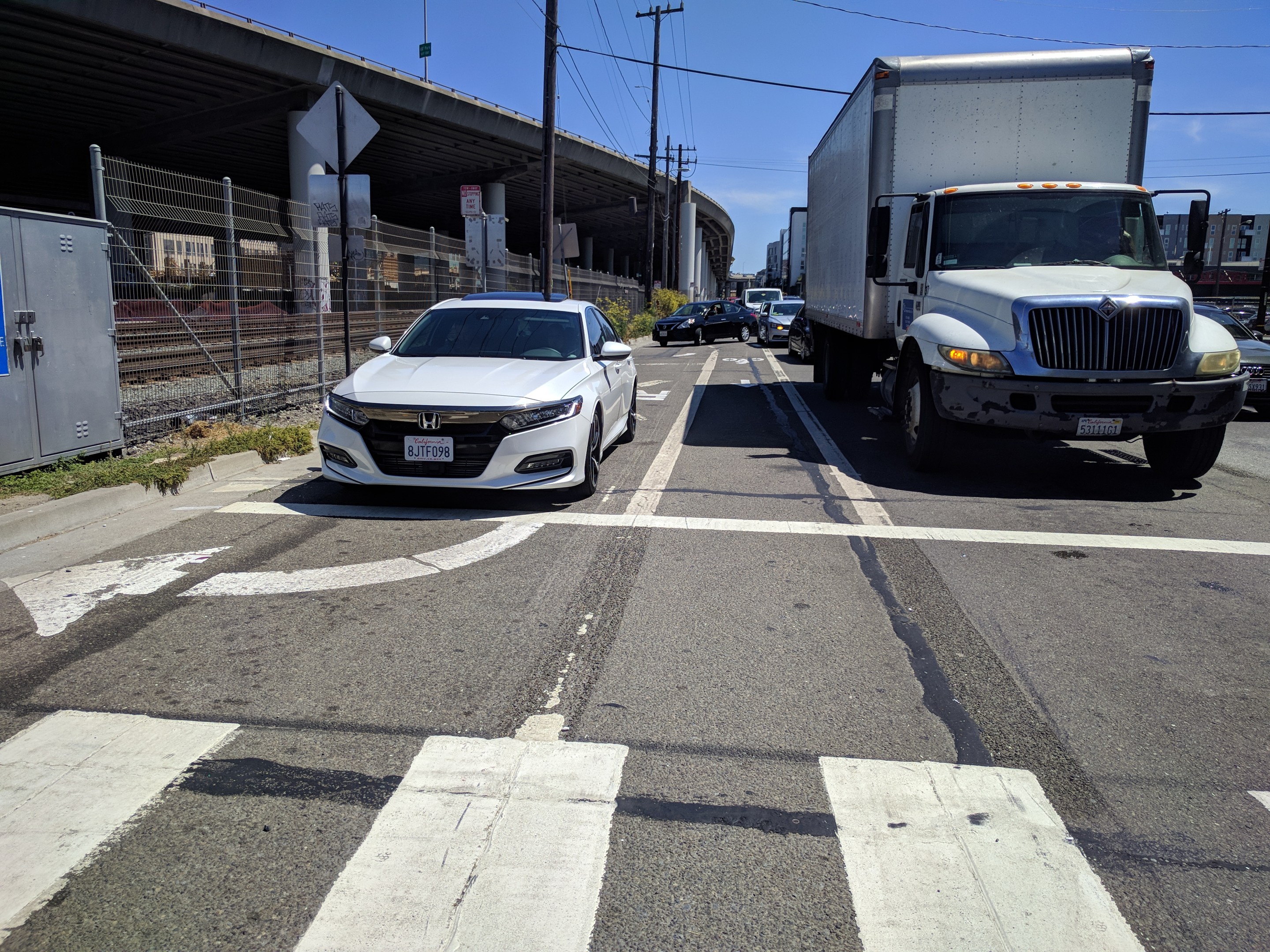
This is not a protected bike lane. All photos Streetsblog/Rudick
At this year's Golden Wheels, the head of the San Francisco Bicycle Coalition, Brian Wiedenmeier, celebrated the speed at which protected bike lanes were added to 7th Street, from Townsend to 16th Street. Mayor Breed also praised the project, which piggybacked on regular repaving, in a post on Medium:
Prior to this week’s policy change, the SFMTA would have gone through months, or even years, of outreach and legislative process before deciding to install a protected bike lane, which means we would have lost this opportunity to take advantage of this construction to immediately make our streets safer.
I finally got a chance to ride on it last week. And, to be frank, I've never felt so unsafe on supposedly "protected" infrastructure. That's because I was sandwiched between moving trucks and cars (see lead photo) with no true protection.
First, what about the intersections?
SFMTA officials told Streetsblog that 7th would include a quick-build protected intersection. And indeed, it does have protection, kind of, sort of, as seen in the image below, at Townsend. But even here, notice the safe-hit posts are recessed away from the lines that are supposed to lead motorists around the turn.
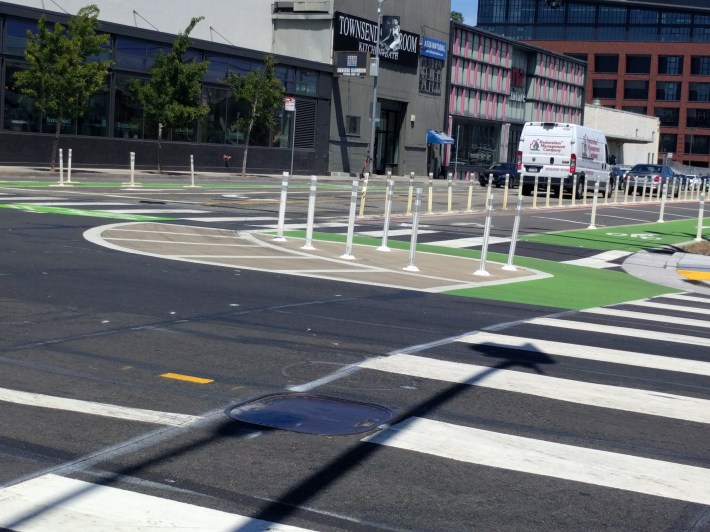
That's not how you do a protected intersection.
The point is to force motorists to take turns slowly and carefully, not ask them nicely with gently curving lines and straws. The turn should be as close as possible to 90 degrees, with a curb, bollards, a planter, or even just a naked chunk of concrete placed at the corner to make sure that happens. Forcing slower, tighter turns offers better sight lines and gives motorists, pedestrians and cyclists more time to react. That makes crashes far less likely and, when they do happen, less damaging.
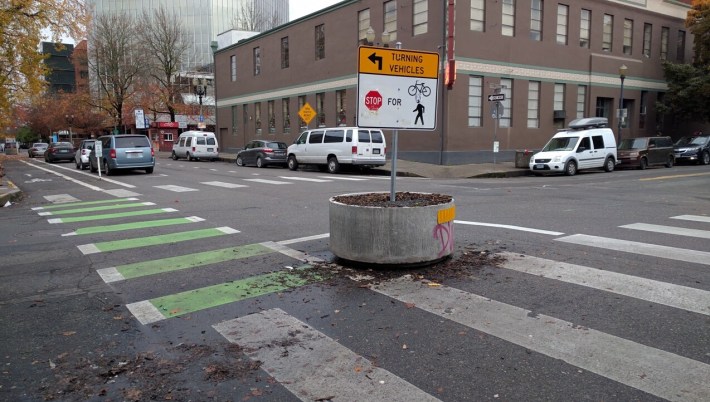
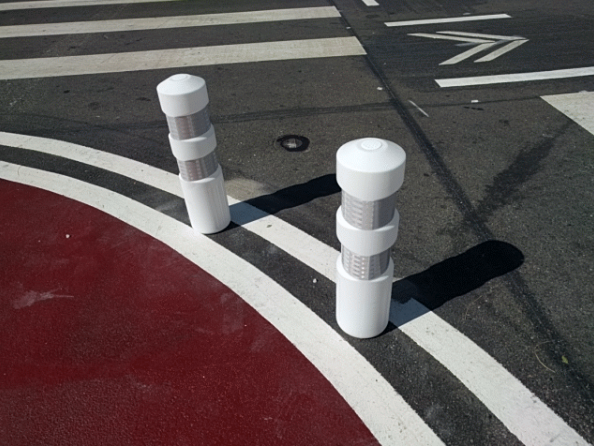
Meanwhile, Townsend is the only "protected" intersection in the whole fast-build project. All the rest use SFMTA's usual--and incredibly intimidating--"mixing zones," which require cyclists to cross paths with right-turning car and truck drivers. And then cyclists are sandwiched between vehicles as they approach the light, as in the lead image and below.
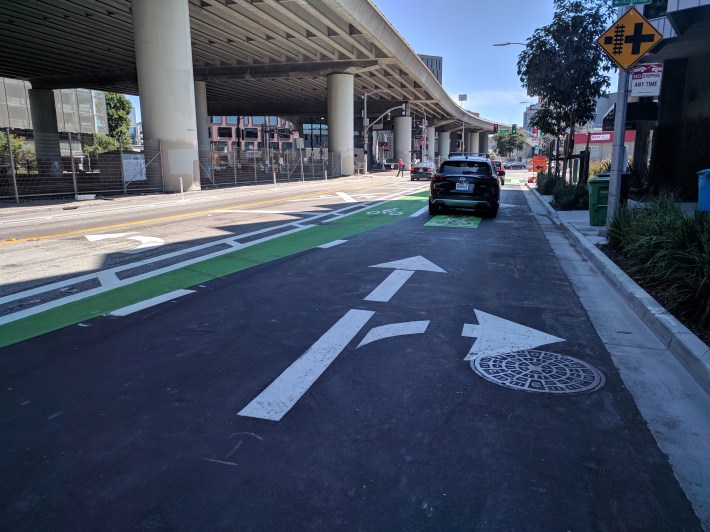
Again, in typical SFMTA fashion, even the paint disappears in the intersection--which you could see more clearly in the photo below if not for the motorist who nearly swept through the front wheel of my bike.
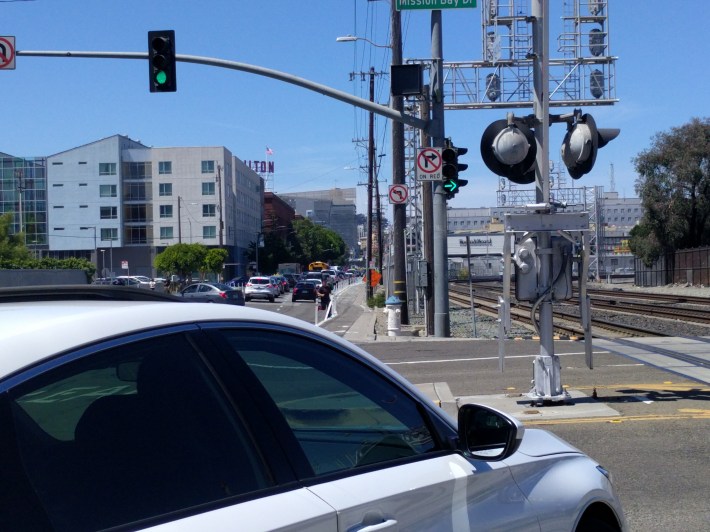
At least the crossing gate for the trains has a protective curb.
Bottom line, plastic is not protection.
Let's get it straight: safe-hit posts, or "silly straws" as I like to call them sometimes, are not protection. They can be used to help demarcate where motorists are supposed to load or park near a parking-protected bike lane. But in that set-up, it's the parked cars, not the straws, that are doing the actual protection. Other than that, while safe-hit posts are a better visual reference than just a line perhaps, they still depend on the attentiveness and care of motorists not to slam into cyclists. When I rode the 7th Street lane, the driver of a grey pickup truck came dangerously close, with two wheels in the bike lane, as he mowed over the line of straws. I got my camera out in time to catch him nicking the one in the photo below, before he returned fully to the vehicle lane.
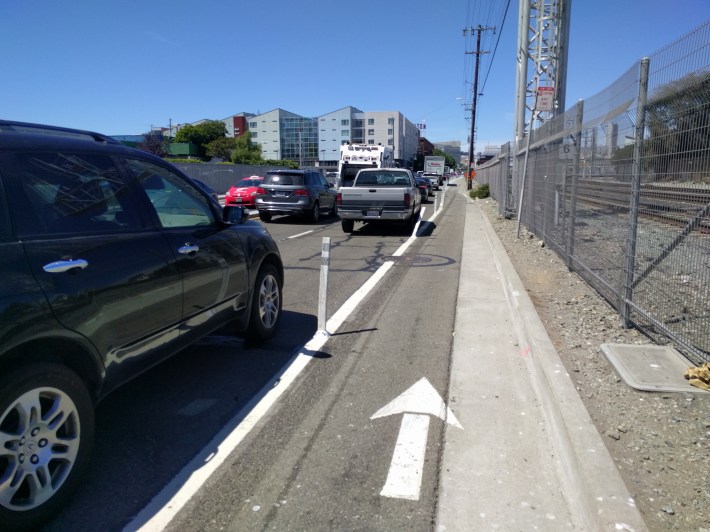
If a pickup truck driver can motor over these posts and into the bike lane, without any fear of damage to his truck, how is this a protected bike lane?
Oakland has show us the way (not that Oakland does this frequently either). See the picture below of Clay Street in Oakland. These barriers can be put in as quickly as safe-hit posts. In fact, San Francisco does this kind of treatment--but for some reason only for temporary sidewalks.
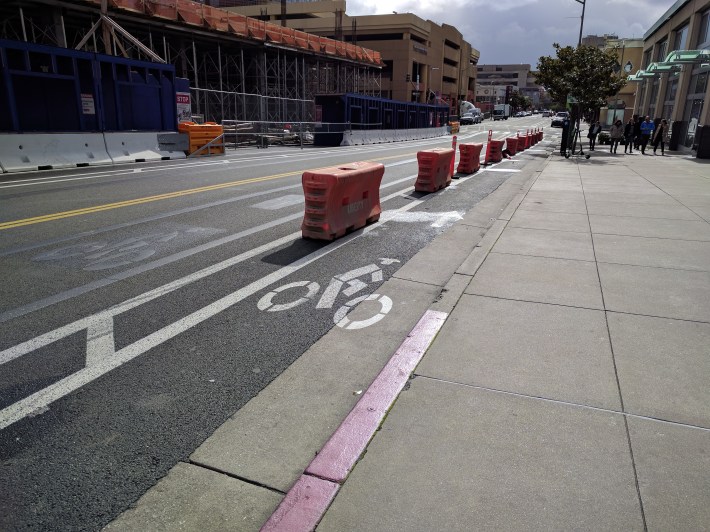
Indeed, the 7th Street bike lanes were updated quickly--SFMTA got that much right. But put something solid and substantial between motorists and cyclists before you call it a protected bike lane.
Stay in touch
Sign up for our free newsletter
More from Streetsblog San Francisco
Weekend Roundup: Bancroft Lane Gets Concrete, Party in Downtown S.F.
...and the Bay Bridge to get its lights back
Richmond-San Rafael Bridge Bike Lane Will Need Support
There's no evidence the bike lane contributes to congestion on the bridge
Update on Oakland DOT’s Lakeshore Protected Bike Lane Project
Public seems fairly positive and accepting towards the coming project. Let's hope it stays that way




